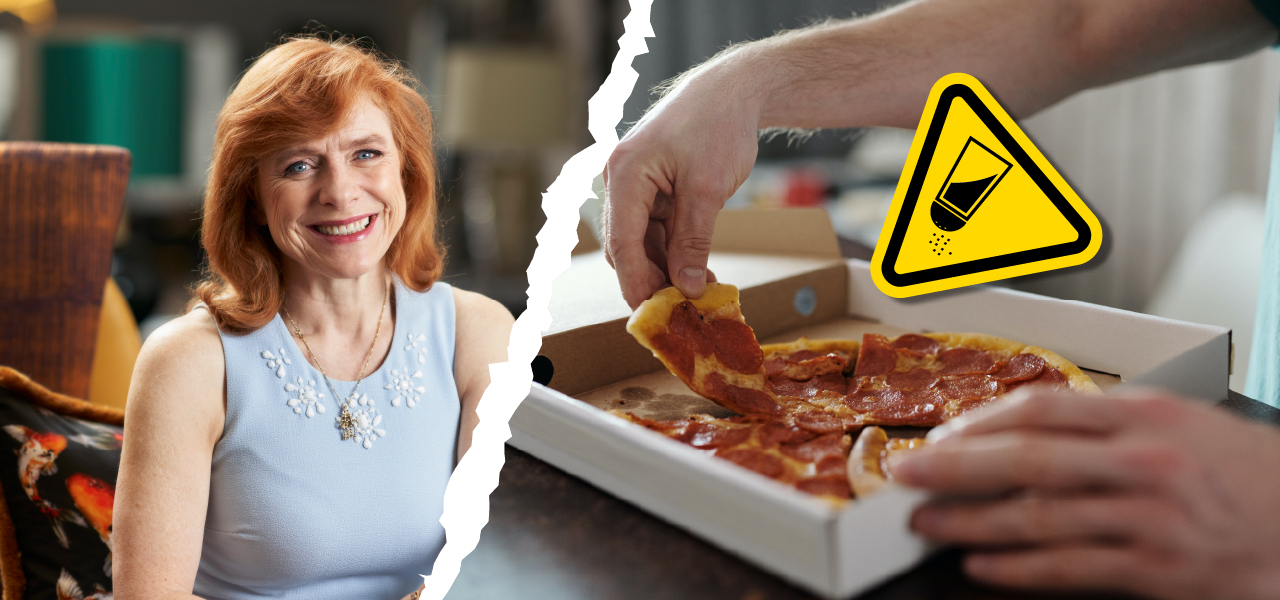13 June 2023

Hidden salt: How your food choices can impact health
The latest research from Action On Salt reveals that one in two takeaway or shop bought pizzas provide more salt than we should be consuming in a whole day – with one example containing over three times the recommended daily intake. Shock statistics like these show it’s more important than ever to know the ‘hidden’ sources of salt that may be making their way into our diets. Our advisor Dr Sarah Jarvis explains more…
Most of us know that we should add less salt to our food when cooking and at the table; however, often people are surprised to learn how much salt is already hidden in the foods they eat every day, as well as just how much of an impact food choice can have on health.
Excess sodium in the diet has been found to increase blood pressure, which is a leading risk factor for heart disease and stroke, and salt is one of the biggest sources of sodium in our diets.
While a small amount of sodium is vital to our survival, because salt is often found in the food we eat, it’s very easy to consume more than our bodies actually need. Therefore, this means we over consume and in turn, increase the risk of hypertension (aka high blood pressure).
Half the food we eat in the UK today is ‘ultra-processed’ – and much of it is surprisingly high in salt, even if it doesn’t taste that salty. Where ready salted crisps or salted peanuts obviously have salt added, it’s easy to underestimate the amount of salt in ready-made and processed foods.
Some of the leading sources of hidden salts in our diets include…
- Pizza
- Processed meats (such as sausages)
- Ready made soups
- Pasta sauces
- Cheese
- Bread
… and more
In addition, even sweet foods, such as breakfast cereals, biscuits, and cake, can all include high levels of salt.
One of the easiest ways to check how much salt is in your everyday foods, is to read food labels. When you start to look at food labels closely, you may be surprised to see how much salt is in your favourite items.
When looking at food labels, you’ll see three colours used – red, amber and green.
- Red = the food is high in salt (or sodium)
- Amber = medium
- Green = low
By opting for foods with green levels, and choosing low salt alternatives, you can help reduce the amount of salt in your diet.
Downloading Food Switch, a free app in the UK, can help you keep track of healthier options to choose when shopping. For further information on Food Switch, visit > https://www.actiononsalt.org.uk/foodswitch/
And if you need ideas on easy and tasty recipe ideas using less salt, you can visit https://uk.losalt.com/cooking-with-losalt/.
